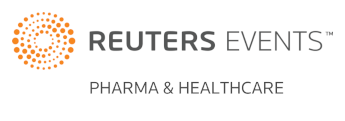The European Union’s Health Technology Assessment Regulation: Reform or Roadblock?
A More Unified Approach—But At What Cost?

The European Union’s new Health Technology Assessment Regulation (HTAR) represents a significant shift in how health technologies are evaluated across the 27 member states of the EU. A few weeks into its implementation, debates continue over whether it is delivering on its promises or creating new inefficiencies. With concerns mounting from industry representatives, national regulators, and patient groups, the question remains: is the regulation set to streamline decision-making, or introduce more obstacles than solutions? Now seems a good time to review which of the debates remain live and how we might expect to see them play out as the regulations bed in.
A More Unified Approach—But At What Cost?
The HTAR aims to harmonize evaluation processes, reduce duplication of efforts, and accelerate patient access to innovative treatments, all while leaving pricing and reimbursement decisions to individual nations. The regulation introduces Joint Clinical Assessments (JCAs), ensuring a consistent methodology for determining the comparative effectiveness of new treatments. Ideally, this would eliminate disparities in market access and decision-making timelines, which previously varied significantly between countries.
However, while JCAs create a more standardized assessment process, they do not address a core issue: the lack of a unified approach to pricing and reimbursement across different national healthcare systems. The coordinators behind the regulation's design acknowledge this limitation but emphasize that decision-making remains a national competency, and under the legislation, there is no joint European reimbursement system. Instead, the approach focuses on coordinated assessments of clinical effectiveness. While this provides structure, it leaves pharmaceutical companies navigating a fragmented landscape with no clear alignment on value-for-money assessments.
The National Sovereignty Dilemma
According to some commentators, the HTAR is fixing a problem that isn’t really there, because the real elephant in the room is that few national governments can agree on the best method to assess the value of a new treatment. The UK’s National Institute for Clinical Excellence (NICE), for example, favours a cost-effectiveness model which, while rigorous, is also criticsed for its inflexibility. In the US, the Inflation Reduction Act means Medicare is negotiating prices on big ticket drugs, but not using the cost-effectiveness method, preferring its own model, which is said to be more in line with American cultural values. Other countries vary in their approach to cost-effectiveness and yet others simply adopt a method compiled from a random selection of those of other countries. To make matters worse, the situation is in constant flux leaving an industry in a state of perpetual catch-up.
Those overseeing the regulation acknowledge the difficulty in striking a balance between flexibility and predictability, stating that absolute predictability would eliminate necessary flexibility, while full flexibility would compromise consistency. The challenge lies in determining the right equilibrium between the two.
A Double-Edged Sword for Industry Players
For companies developing cutting-edge medical innovations, the new HTA framework presents both opportunities and significant hurdles. A more predictable system could lead to quicker approval timelines, but industry representatives worry that the rigid nature of the process might stifle innovation and restrict market access. One major concern is the tight submission deadlines—100 days after final scoping criteria, or just 60 days in cases of accelerated regulatory approval. Smaller firms with limited resources may struggle to meet these demands, potentially leading to fewer product launches in the EU.
Regulators, however, counter claims that the new system is overly burdensome, arguing that expectations have been consolidated into a single, unified framework. Instead of each member state having divergent requirements, a joint assessment system has now been introduced. While this may simplify requirements for larger companies, smaller players may still find the transition difficult.
Patient Access and the Unintended Consequences
Patient groups and healthcare advocates warn that while efficiency improvements are welcome, increased workload on HTA bodies, coupled with capacity constraints, could slow down rather than accelerate patient access to critical treatments. Furthermore, the lack of industry inclusion in the scoping phase of assessments, coupled with uncertainties surrounding data confidentiality, raises concerns about transparency and procedural fairness.
A significant concern is the variation in how different national HTA bodies interpret evidence. Some rely heavily on randomized controlled trials, while others incorporate broader sources of real-world data. According to regulatory bodies, the system is transitioning from a sequential to a parallel model, aligning HTA assessments more closely with regulatory processes. While concerns about delays exist, this new approach is expected to reduce overall time to market.
The Road Ahead: Challenges and Opportunities
The long-term success of the HTAR will depend on how efficiently its implementation is managed and how well it balances regulatory consistency with the flexibility required to accommodate diverse healthcare systems. While companies must now ensure that their evidence packages meet both EU-wide JCA requirements and national expectations, the introduction of a more predictable assessment process could ultimately lead to faster and more equitable HTA decisions.
Regulatory bodies advise companies to engage early in the process. The use of Joint Scientific Consultations (JSCs) is recommended as a means for companies to seek guidance on study designs and regulatory requirements. Open communication and early preparation are seen as critical factors in ensuring a smooth transition.
Conclusion: A Work in Progress
As discussions continue, skepticism remains about whether the new system can truly deliver the intended benefits. While the HTAR marks a step toward a more coordinated European HTA landscape, it also introduces new challenges that could disproportionately impact companies and patients alike. According to regulatory projections, in five years, the system is expected to have successfully reduced disparities in access across Europe. While budget constraints will remain a challenge, the joint assessment system is anticipated to provide a more consistent and transparent knowledge base for decision-making.
The coming months will be critical in determining whether the EU can fine-tune its approach to create a regulatory system that supports both innovation and equitable access to healthcare.
